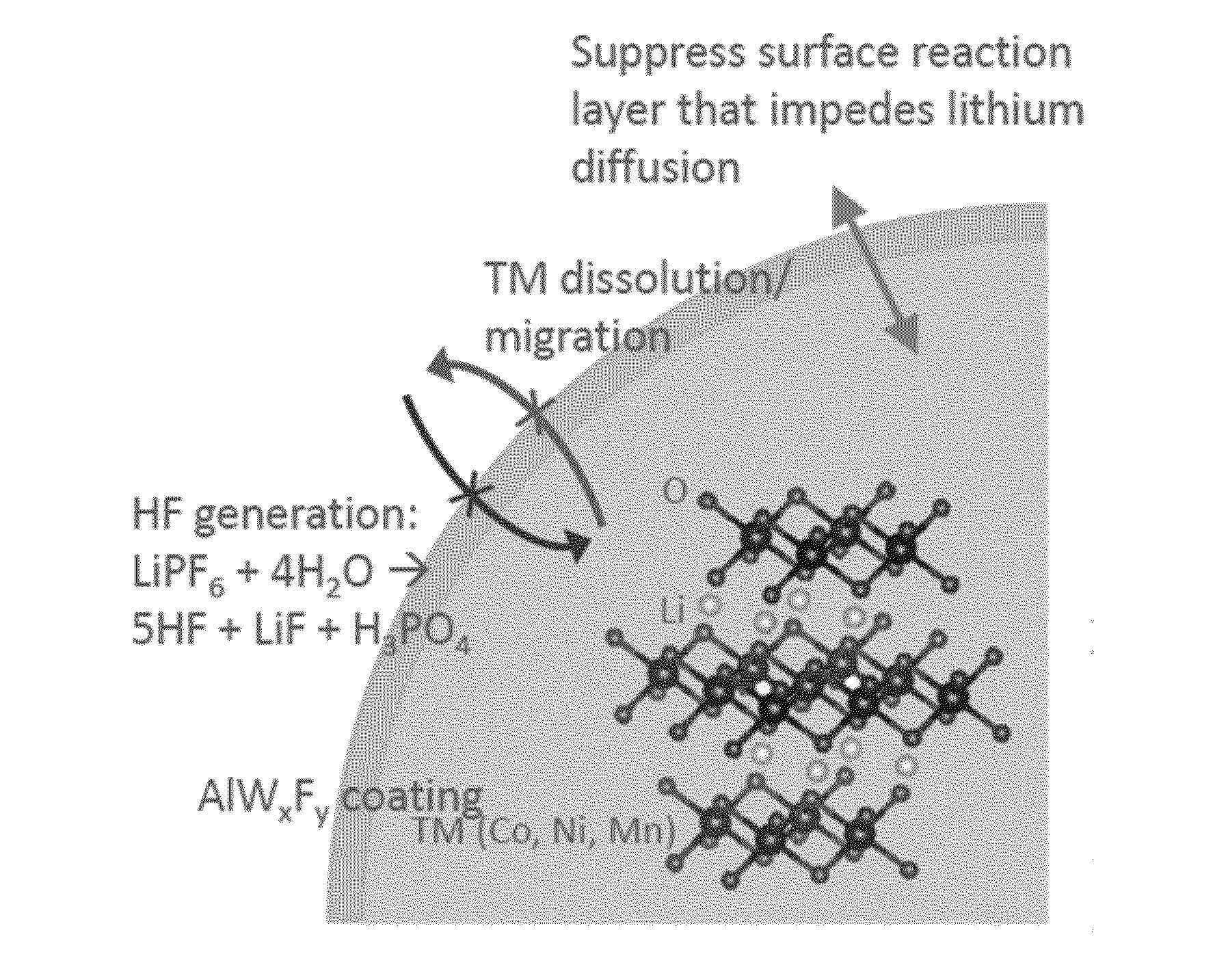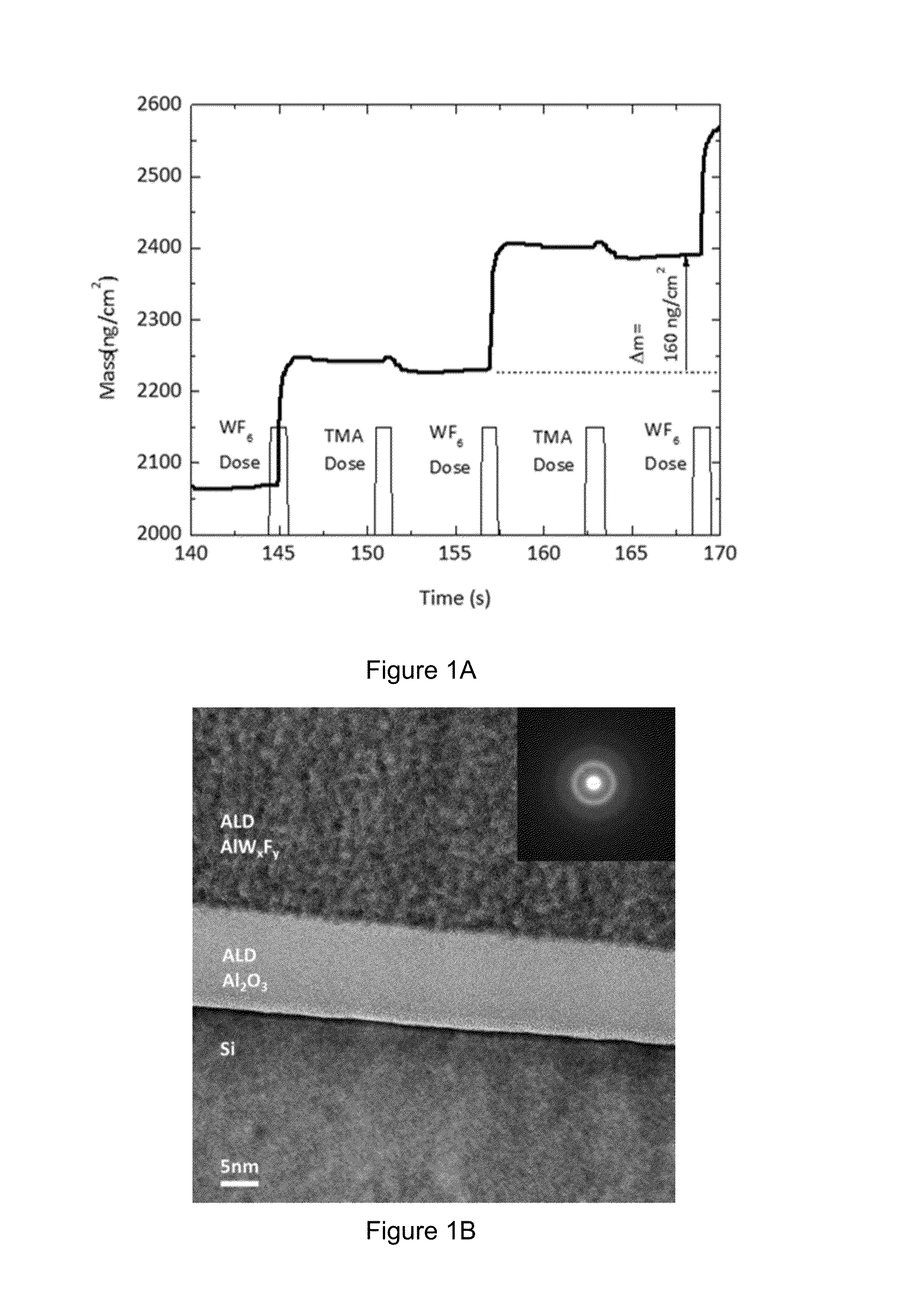METAL FLUORIDE PASSIVATION COATINGS PREPARED BY ATOMIC LAYER DEPOSITION ON LiCoO2 FOR LI-ION BATTERIES
a technology of metal fluoride and passivation coating, which is applied in the manufacture process of electrodes, cell components, electrochemical generators, etc., can solve the problems of li-ion batteries, in general, suffering irreversible capacity loss during high voltage operation, and surface layers can form
- Summary
- Abstract
- Description
- Claims
- Application Information
AI Technical Summary
Benefits of technology
Problems solved by technology
Method used
Image
Examples
Embodiment Construction
[0023]Atomic layer deposition (ALD) is a modified form of chemical vapor deposition (CVD) that uses the self-limiting nature of specific precursors to deposit films in a layer-by-layer fashion. ALD is particularly well-suited for coating electrode surfaces in that a conformal coating can be applied with precise control of thickness and composition. Previous studies on ALD-coated electrodes have primarily focused on metal oxides such as Al2O3, TiO2, LiAlO2, and LiTaO3 because the ALD chemistry of these oxides is well known. Metal fluoride growth by ALD is complex and challenging, mainly due to the lack of suitable fluorine precursors. For example, HF, a highly aggressive chemical etching agent, has been used to deposit CaF2, ZnF2, and SrF2. More recently, alternative ALD chemistries have been developed such as MgF2 and LiF ALD using either TaF5 or TiF4 as the fluorine precursor for optical applications. However, the substrate temperatures in these cases were 300-400° C.; high enough ...
PUM
| Property | Measurement | Unit |
|---|---|---|
| deposition temperature | aaaaa | aaaaa |
| deposition temperature | aaaaa | aaaaa |
| thickness | aaaaa | aaaaa |
Abstract
Description
Claims
Application Information
 Login to View More
Login to View More - R&D
- Intellectual Property
- Life Sciences
- Materials
- Tech Scout
- Unparalleled Data Quality
- Higher Quality Content
- 60% Fewer Hallucinations
Browse by: Latest US Patents, China's latest patents, Technical Efficacy Thesaurus, Application Domain, Technology Topic, Popular Technical Reports.
© 2025 PatSnap. All rights reserved.Legal|Privacy policy|Modern Slavery Act Transparency Statement|Sitemap|About US| Contact US: help@patsnap.com



